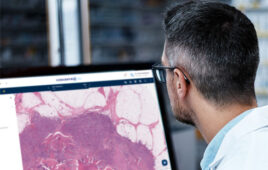
[Image courtesy of Adobe Stock]
Since the turn of the century, organizations have relied on ICSR data for signal detection. Whether used to report product problems, adverse events or consumer complaints, ICSRs provide information integral to medicinal products’ safety.
When the system flags a disproportionate number of adverse events (AEs) for a product, highly trained safety scientists or risk physicians on the PV signal team analyze underlying cases and other available evidence. They use this information to determine a possible causal relationship between the AEs and related products. This complex, time-consuming process requires many manual steps and leans heavily on basic software tools to complete. The industry must evolve in ways that enable PV signal teams to reduce the time spent on the noise and shift their focus toward the data that matters most.
Another challenge? Individual case safety reports (ICSRs) are often 10 steps removed from what happens clinically with a patient. As a result, this data doesn’t always provide enough specific information for safety scientists to reach a definitive conclusion about patient reactions to certain drugs.
As case volumes rise and budgets remain static, the need for innovation takes center stage. In addition, PV signal teams face increasing pressure to balance growing workloads while maintaining regulatory compliance.
How cognitive computing drives signal detection efficiency
If PV signal teams are to remain compliant without increasing team size or resources, they must become more efficient — quickly. Teams failing to embrace technology designed to increase efficiency will lag in the industry and may face increased compliance risk.
Advanced cognitive computing is especially well suited to accelerate the analysis of case series. While clustering and knowledge graphs help reduce errors and generate insights for target prioritization in drug discovery and clinical settings, these technologies have been overlooked as techniques to create nimbler, more efficient PV signal teams. This year, world-class sponsors and CROs will embrace and use these technologies to accelerate their PV signal teams’ efficiency, drive faster time to insight and identify risk in a fraction of the time versus traditional models.
With ICSRs, and other more traditional sources like FDA Adverse Event Reporting System (FAERS), VigiBase databases, and clinical trial data, PV signal teams must incorporate new data sources such as medical claims, electronic health records (EHRs) and even social media efficiently — and accurately.
The next frontier: Cutting the noise by triangulating data sources
The status quo in signal detection relies too heavily on reported adverse events. It’s not without limitations, including noisy data that was either corrupted, distorted or recorded with improperly documented procedures. This noisy data can lead to false conclusions and is misunderstood data.
For example, risk physicians review hundreds of drug-event pairs. However, sometimes fewer than 5% of these instances are viable, meaning 95% can be categorized as just noisy data that leads PV teams on a fruitless pursuit.
Employing a disproportionate method more suited to identifying their unique adverse event data or lowering thresholds for products with well-established safety profiles might solve part of the issue. Yet setting these types of parameters in data sets will only go so far in a small amount of productivity improvement.
Additional RWD sources
Teams must leverage additional real-world data (RWD), which can systematically strengthen or weaken signals found in reported adverse event data sets. Drug developers study RWD along with ICSR data to ensure patient safety, gathering it from:
- Claims and billing activities.
- Electronic health records.
- Patient-generated data.
RWD helps organizations pivot away from an overreliance on ICSR data by facilitating faster risk detection and reducing signal noise. This change positions organizations to uncover correlations between drugs and benefits more quickly and efficiently. For example, when researchers identify a correlation between a treatment and a reduction in blood pressure for hypertension patients, the organization has now discovered a new way to help patients.
Regulators, including the Food and Drug Administration (FDA), have led the way in innovative signal detection approaches using RWD with their Sentinel Initiative. This national electronic system is transforming how drug developers monitor the safety of FDA-regulated medical products.

Elizabeth Smalley
In 2023, sponsors and CROs have also stepped up their exploration of solutions beyond ICSR data for achieving regulatory compliance and greater efficiency. By leveraging advanced automation and new data sources like RWD, organizations unlock exciting new opportunities to streamline the safety signal process, increase their strategic contributions and drive growth.
Elizabeth Smalley is the director of product management and data and analytics at ArisGlobal. With over 15 years of experience across data analytics, Elizabeth Smalley has a passion for exploring the intersection of data science and human reasoning, with experience bringing AI-powered software to market to drive safety and clinical outcomes for patients and clinicians. Currently, she leads the teams managing the Data Platform, LifeSphere Clarity and LifeSphere Signals and Risk Management product lines.
Filed Under: clinical trials, Drug Discovery





Tell Us What You Think!
You must be logged in to post a comment.